Common Core: RH.6-8.1, RH.6-8.6, RH.6-8.7, RI.6-8.1, RI.6-8.6, SL.6-8.1, W.6-8.1
C3 (D2/6-8): Civ.3, Civ.14, His.2, His.3, His.14, His.15
NCSS: Time, continuity, and change; Power, authority, and governance
STANDARDS
Common Core: RH.6-8.1, RH.6-8.6, RH.6-8.7, RI.6-8.1, RI.6-8.6, SL.6-8.1, W.6-8.1
C3 (D2/6-8): Civ.3, Civ.14, His.2, His.3, His.14, His.15
NCSS: Time, continuity, and change; Power, authority, and governance
The American Revolution: 6 Things You Should Know (But Probably Don’t)
Think you know everything you need to about the birth of our nation? Here’s what the history books sometimes leave out.
The Revolutionary War (1775-1783) is likely one of the first historical events you learned about in school. By now, you may have studied it enough—or listened to the Hamilton soundtrack enough—to think you know all there is to know. But the story of our nation’s founding isn’t as straightforward as it’s sometimes portrayed. Here are some little-known truths about the fight for America’s independence.
1. The beef wasn’t just about taxes.
Starting in 1764 with the Sugar Act, the British Parliament imposed a series of taxes on the 13 American Colonies to raise money to pay off war debt (see Key Events, below). The taxes angered the colonists. Though officially ruled by British monarch King George III and Parliament, each colony had its own local government and elected representatives. The colonists believed it was their own governments, not Parliament, that should tax them. That’s why their rallying cry became “No taxation without representation!”
In other words, the real conflict was about who had the power to pass laws affecting the Colonies, says Matthew Skic of the Museum of the American Revolution in Philadelphia, Pennsylvania. “The colonists were upset the decision [on taxes] was coming from Great Britain and not the American assemblies,” he says.
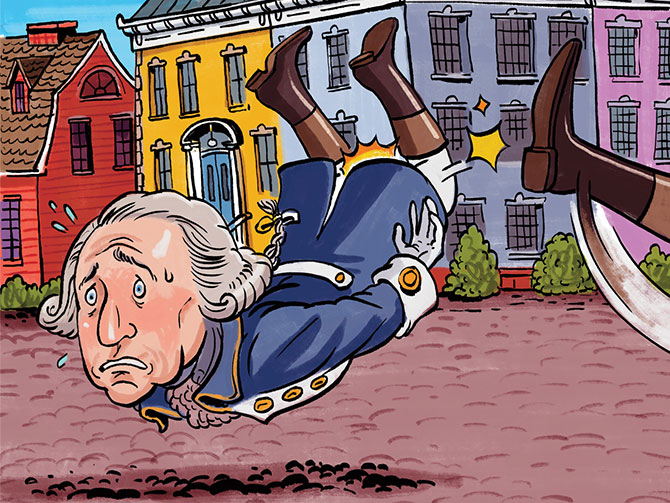
Commander of the Continental Army George Washington nearly got the boot.
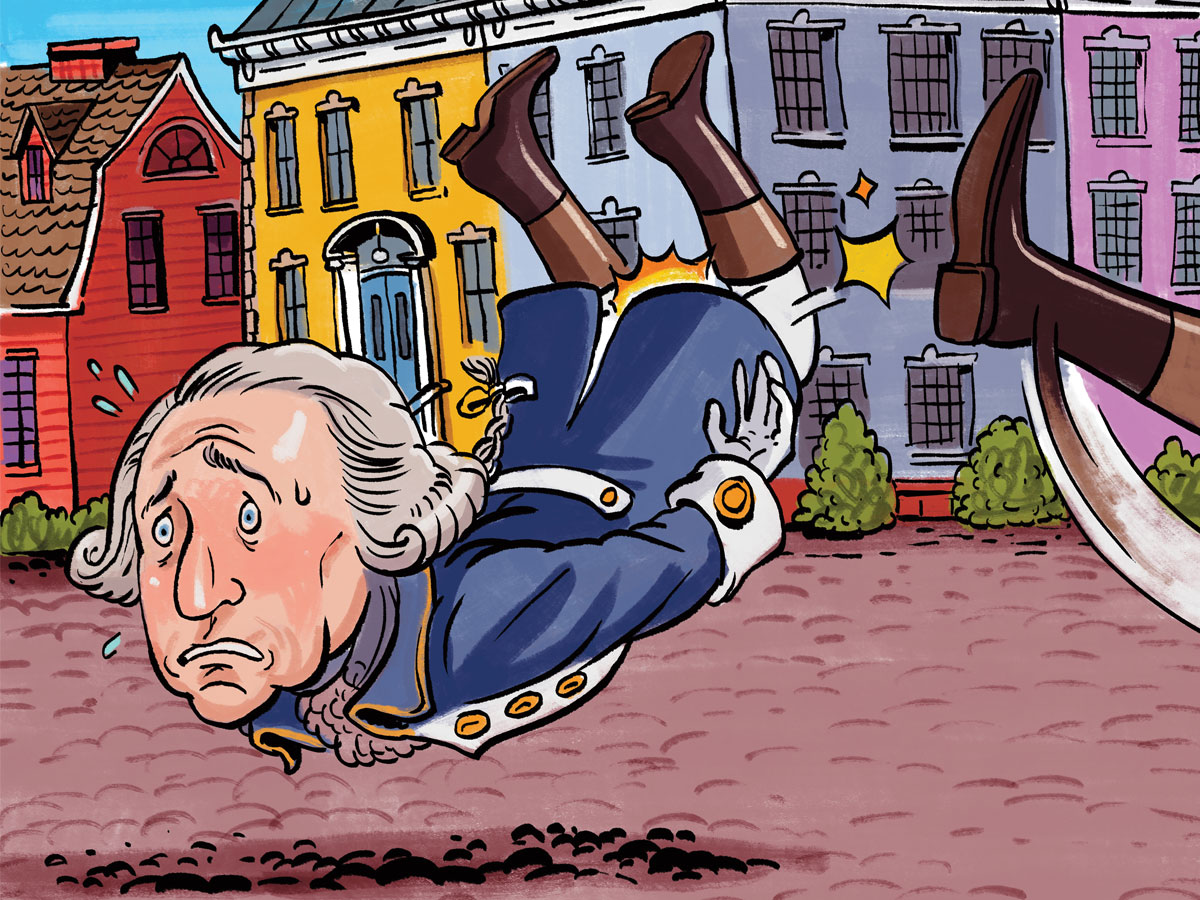
2. George Washington almost lost his job.
Who would dare second-guess George Washington, commander of the Continental Army and future first U.S. president? Plenty of people, actually. In the fall of 1777, after a few
But people loyal to Washington, including the Marquis de Lafayette (see number 4), defended him. When Washington got wind of what was going on, he confronted his chief rivals—Gates and General Thomas Conway—and they backed down.
In the end, Washington succeeded in part because his devotion to his troops inspired the same in them. For instance, in March 1783, some officers grew frustrated and discussed
Who Knew?
In a letter to Gates, Conway referred to Washington as “weak.” Ouch!
3. African-Americans battled for the nation’s freedom—and their own.
Historians estimate that 500,000 African-Americans were enslaved in the Colonies at the time of the war. Slaves faced a hard decision: Should they choose a side and take up arms, hoping to gain personal liberty?
In 1775, the British promised freedom to Patriot-owned slaves who escaped and joined
The Americans were more reluctant to recruit and arm blacks. However, more than 5,000 African-Americans (both free and enslaved) eventually served in the Continental Army. Black soldiers “played a role in almost every significant battle,” says Kenneth Davis, author of the Don’t Know Much About History series.
After the war, the British evacuated about 3,000 of the former slaves who had fought with them to freedom in Canada. But many other slaves were returned to their owners. “Most of the slaves who served in the Continental Army didn’t get their freedom,” says Don Hagist of the Journal of the American Revolution.


4. A French teen became America’s biggest fan.
In 1777, a 19-year-old French
Lafayette offered to join the Continental Army as a volunteer at his own expense. With nothing to lose—and hoping to take advantage of his connections in France—Congress named the teen a general.
Who Knew?
Lafayette named his only son Georges Washington Lafayette, as “a tribute of respect and love for my dear friend.”
“He was basically an unpaid intern,” writes Sarah Vowell in her book Lafayette in the Somewhat United States. The French rookie’s obvious enthusiasm endeared him to George Washington, and the two became close friends.
Between battles, Lafayette wrote letters to French officials, relentlessly pushing them to support the Patriots’ cause. Thanks in part to his efforts, France formally backed the Americans in 1778. Its military and financial help proved crucial.
Lafayette came in handy during the fighting as well—his troops helped contain the British during the Yorktown, Virginia, campaign. Indeed, writes Vowell, the Frenchman “turned out to be the best friend America ever had.”
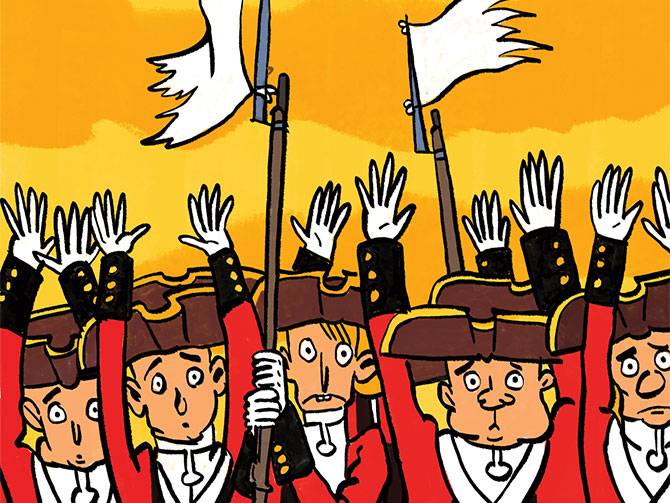
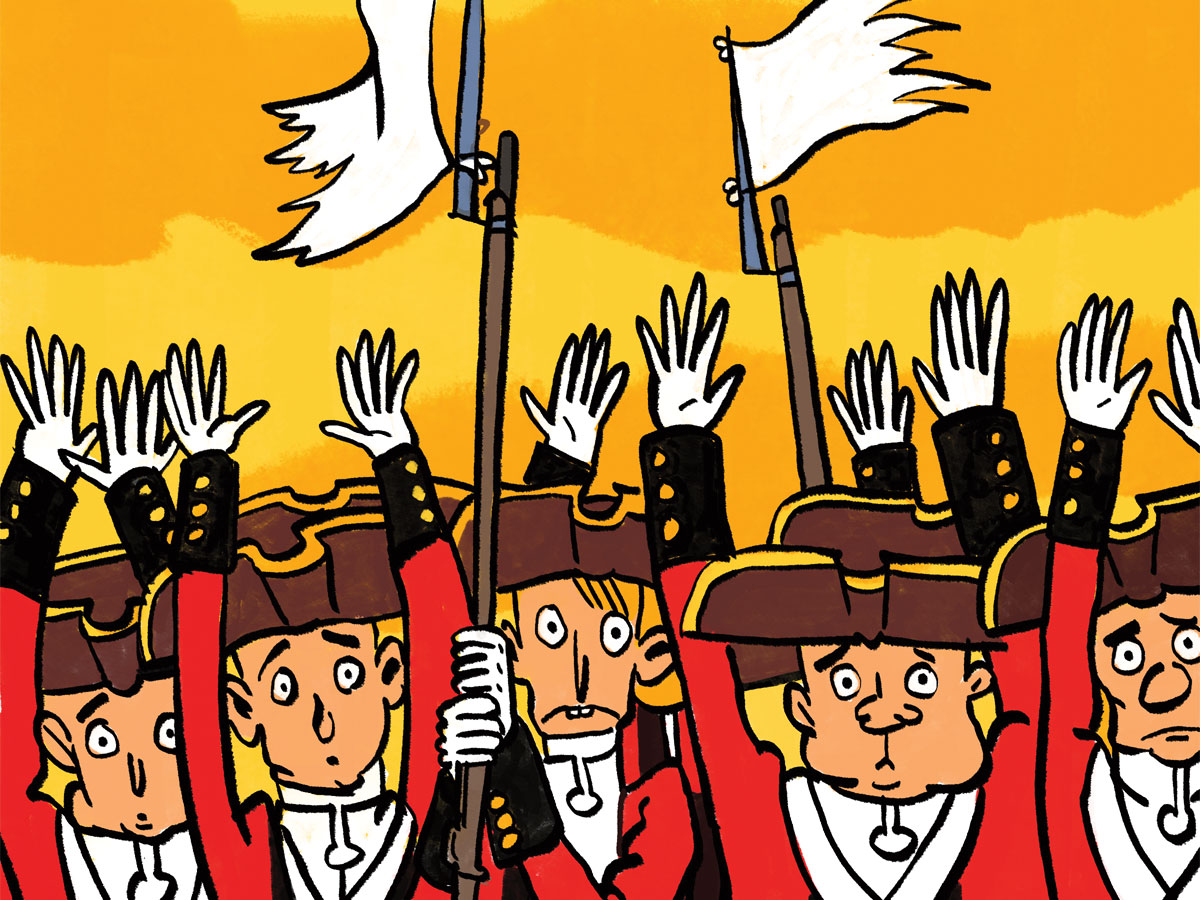
5. The Americans won—but not necessarily on the battlefield.
“When you look at it battle by battle, the Americans lost far more than they won,” says Hagist. After all, the inexperienced colonists were up against a professional army. Why, then, did Great Britain surrender? The British “didn’t have a good strategy for how to put down a popular rebellion,” says Hagist. Even though the Americans were outmatched repeatedly, they persisted, aided by France and other allies. The war dragged on and on, eventually stretching Britain’s resources to the limit.
Who Knew?
Revolutionary War battles took place not only in North America and Europe but also in Africa and Asia.
6. The fighting didn’t actually end at Yorktown.
It’s popular belief that the war ended when British General Charles Cornwallis surrendered on October 19, 1781, in Yorktown, Virginia. But that’s only partly true. The British did admit defeat, but by that point Spain and the Netherlands had joined the war against them. It took nearly two years for all parties to hammer out peace
An early version of the peace deal (the Treaty of Paris) was signed in France in November 1782, but getting that news to troops fighting far away took months. As a result, the real last battle of the war happened on June 29, 1783, off the coast of India in the Bay of Bengal. There, French and British fleets were attacking each other when a British ship flying a white flag arrived to tell them the war had been over for a while.
CORE QUESTION: What were some key factors that led to the U.S. victory?
KEY EVENTS
The American Revolution

Library of Congress
Colonists in Native American attire dump tea overboard.

1764-1773
Taxation and Protest
To raise money to pay off old war debt, Britain’s Parliament taxes the colonists on such items as sugar, glass, and paper. Many colonists protest the taxes by refusing to buy British goods.
December 16, 1773
Boston Tea Party
In their first major act of defiance, Patriots protest a British tax on tea by dumping 342 chests of tea into Boston Harbor. Britain later punishes the colonists with laws known as the Intolerable Acts.
April 19, 1775
The War Begins
The first shots of the Revolutionary War are fired at the battles of Lexington and Concord in Massachusetts.
July 4, 1776
Independence Declared
The Continental Congress officially adopts the Declaration of Independence.
October 19, 1781
British Surrender
British General Charles Cornwallis surrenders to George Washington in Yorktown, Virginia.
September 3, 1783
Peace Treaty
The U.S. and Britain sign the Treaty of Paris, which recognizes the United States as an independent nation.
MAP SKILLS
Revolutionary America
This map of the 13 American Colonies shows some key battles of the Revolutionary War (1775-1783).
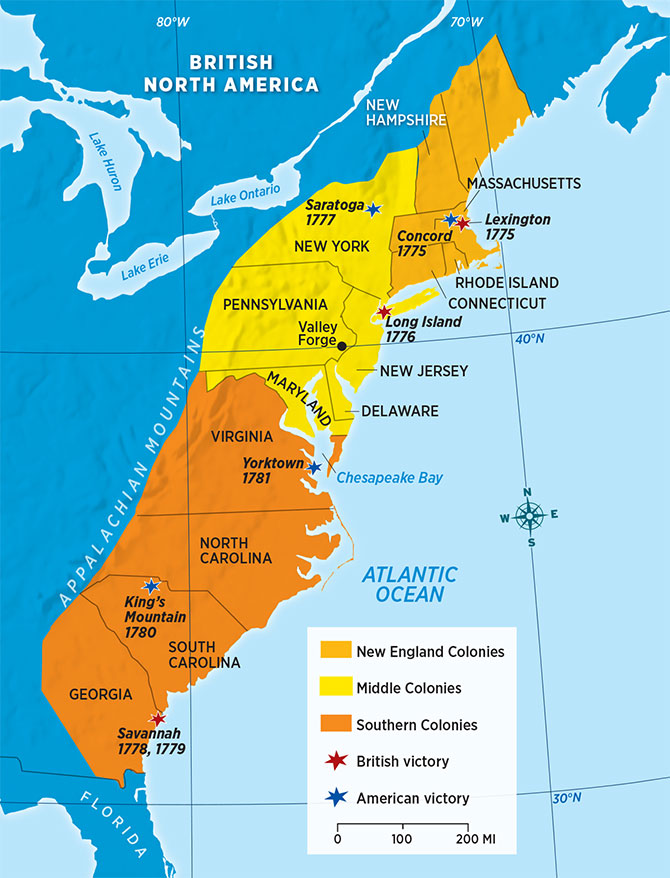
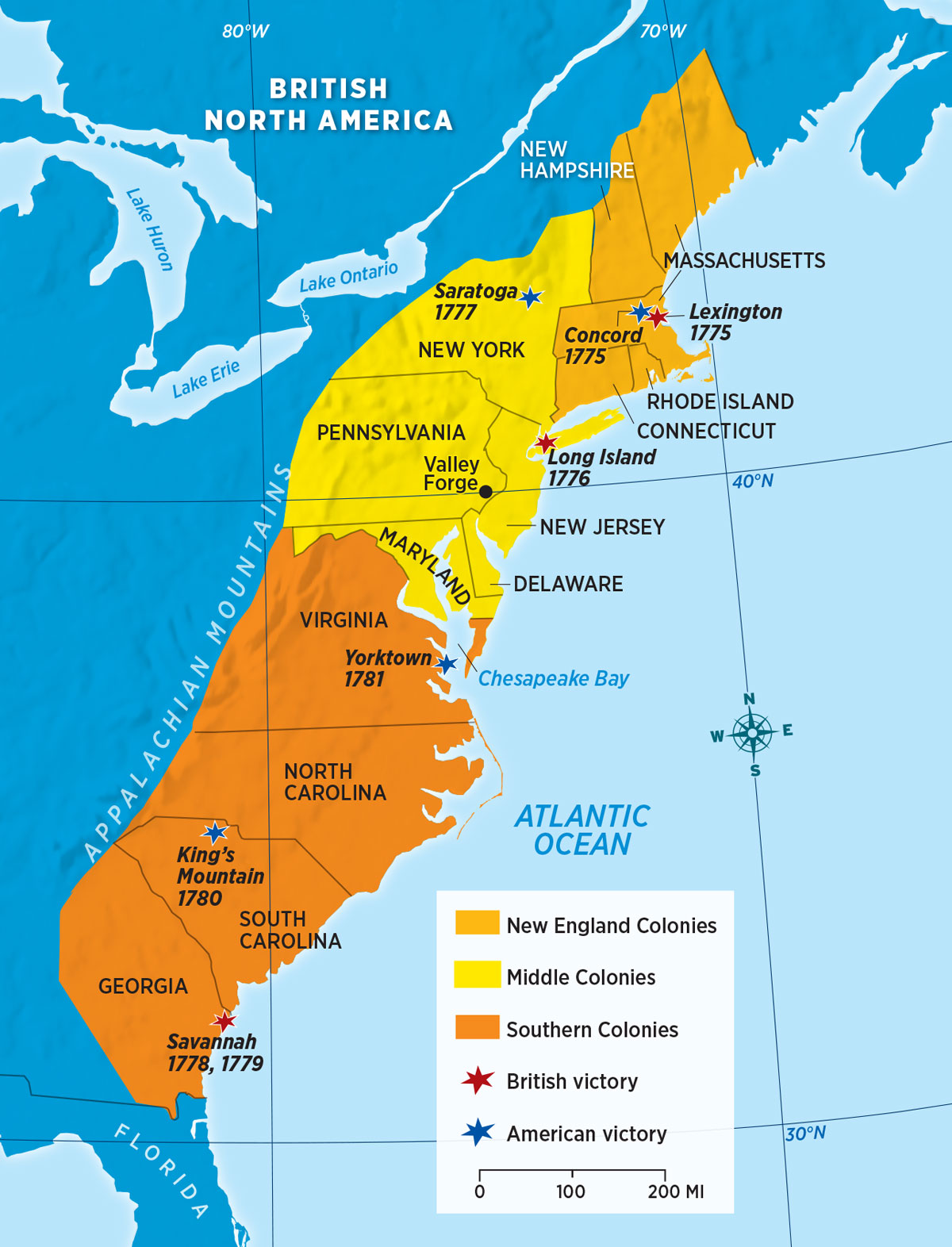
1. In which colony were the two earliest labeled battles fought?
2. Which colonies made up the Middle Colonies?
3. Which labeled battles were fought in the Southern Colonies? Which side won each?
4. On what body of water does Yorktown, Virginia, have coastline?
5. What is the approximate latitude and longitude of Valley Forge, Pennsylvania?